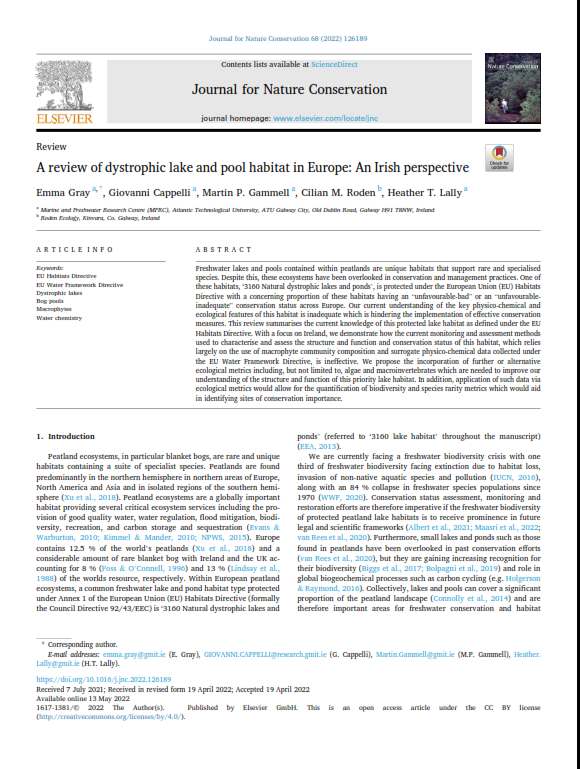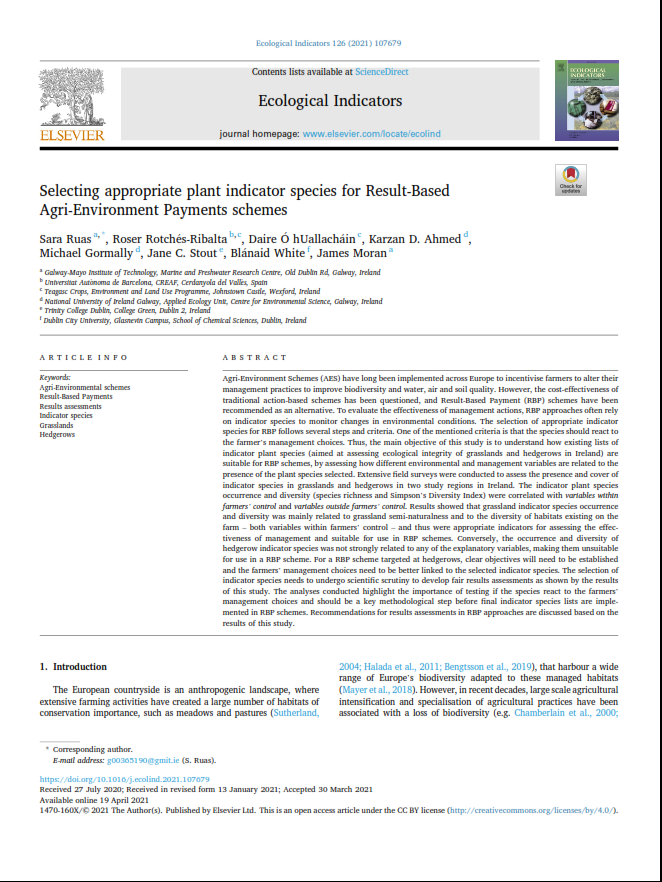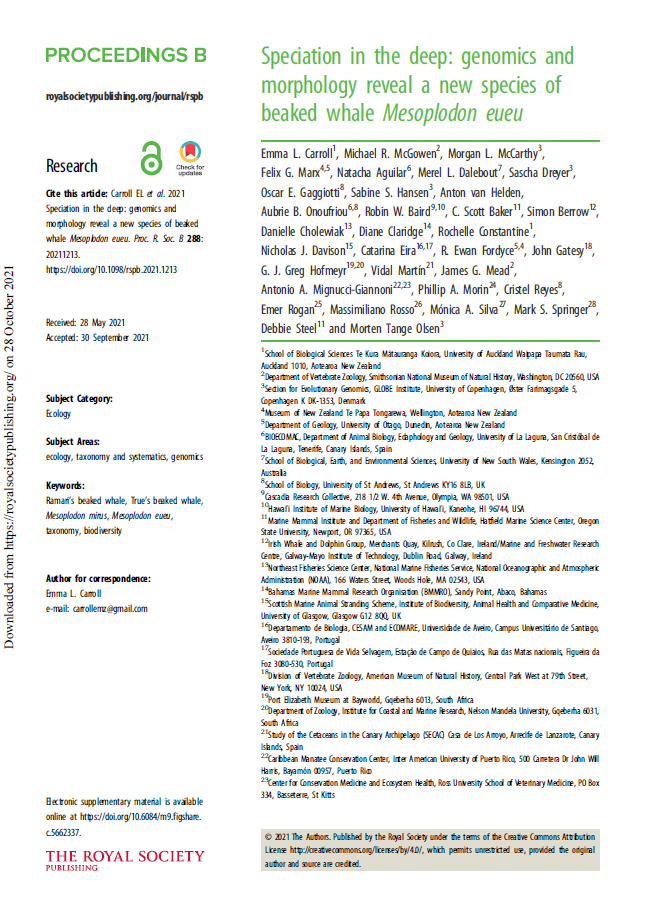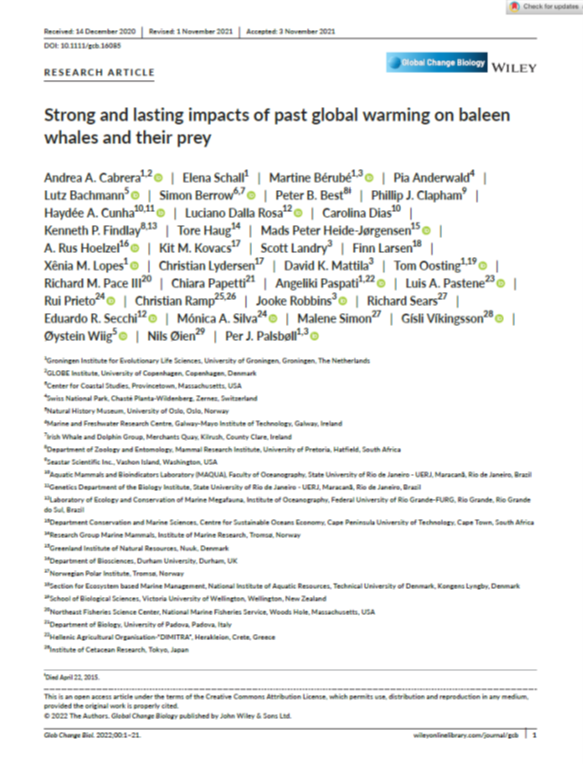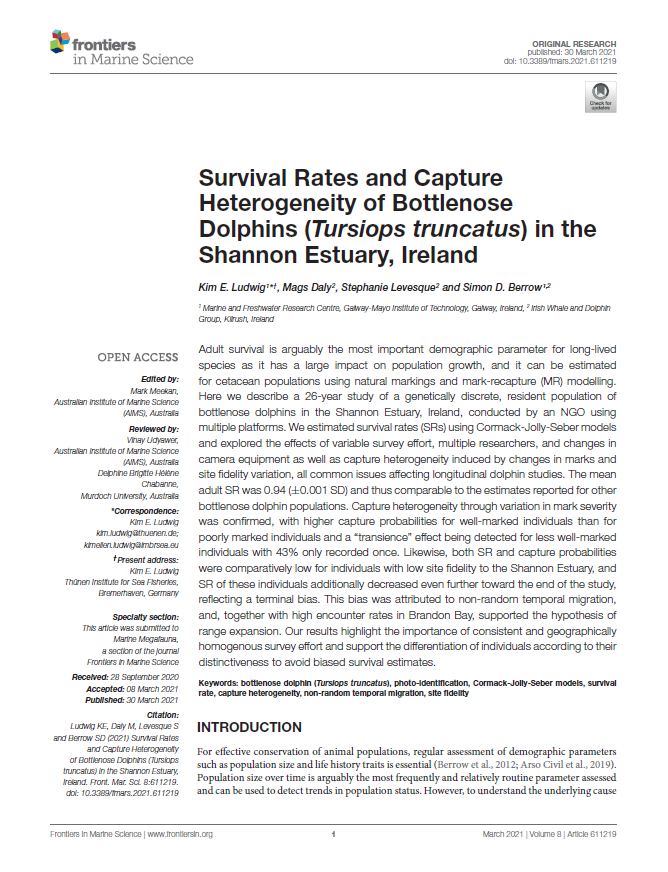Browsing Articles - Marine & Freshwater Research Centre, ATU Galway City by Title
Now showing items 68-80 of 80
-
A review of dystrophic lake and pool habitat in Europe: An Irish perspective
(Elsevier B.V., 2022-05-13)Freshwater lakes and pools contained within peatlands are unique habitats that support rare and specialised species. Despite this, these ecosystems have been overlooked in conservation and management practices. One of these ... -
Selecting appropriate plant indicator species for Result-Based Agri-Environment Payments schemes
(Elsevier Ltd, 2021-04-19)Agri-Environment Schemes (AES) have long been implemented across Europe to incentivise farmers to alter their management practices to improve biodiversity and water, air and soil quality. However, the cost-effectiveness ... -
Selection on ancestral genetic variation fuels repeated ecotype formation in bottlenose dolphins
(American Association for the Advancement of Science, 2021-10-27)Studying repeated adaptation can provide insights into the mechanisms allowing species to adapt to novel environments. Here, we investigate repeated evolution driven by habitat specialization in the common bottlenose ... -
Short note: the first confirmed successful refloat of a stranded bottlenose dolphin (Tursiops truncatus) in Ireland and subsequent resighting with a neonate
(2014-05)The article presents a study which discusses the refloating of bottlenose dolphins (Tursiops truncatus) and the subsequent resighting with a neonate in Ireland. Topics include the live-stranding events of a bottlenose ... -
Size dependent egestion of polyester fibres in the Dublin Bay Prawn (Nephrops norvegicus)
(Elsevier B.V., 2022-05-24)Microplastics (MPs) are an extensive global contaminant in the marine environment, known to be ingested by marine organisms. The presence of MPs in the commercially important marine decapod crustacean Nephrops norvegicus ... -
Social structure within the bottlenose dolphin (Tursiops truncatus) population in the Shannon Estuary, Ireland
(2010)The Shannon Estuary is home to Ireland’s only known resident population of bottlenose dolphins (Tursiops truncatus) and is designated as a candidate Special Area of Conservation (cSAC) for this species. Proper conservation ... -
Spatial separation of catches in highly mixed fisheries
(Springer Nature, 2018-09)Mixed fisheries are the dominant type of fishery worldwide. Overexploitation in mixed fisheries occurs when catches continue for available quota species while low quota species are discarded. As EU fisheries management ... -
Spatio-temporal genetic tagging of a cosmopolitan planktivorous shark provides insight to gene flow, temporal variation and site-specific re-encounters
(Springer Nature, 2020-02-03)Migratory movements in response to seasonal resources often influence population structure and dynamics. Yet in mobile marine predators, population genetic consequences of such repetitious behaviour remain inaccessible ... -
Speciation in the deep: genomics and morphology reveal a new species of beaked whale Mesoplodon eueu
(The Royal Society, 2021-10-27)The deep sea has been described as the last major ecological frontier, as much of its biodiversity is yet to be discovered and described. Beaked whales (ziphiids) are among the most visible inhabitants of the deep sea, ... -
Strong and lasting impacts of past global warming on baleen whales and their prey
(Wiley, 2022-02-02)Global warming is affecting the population dynamics and trophic interactions across a wide range of ecosystems and habitats. Translating these real-time effects into their long-term consequences remains a challenge. The ... -
Survival Rates and Capture Heterogeneity of Bottlenose Dolphins (Tursiops truncatus) in the Shannon Estuary, Ireland
(Frontiers Media S.A., 2021-03-30)Adult survival is arguably the most important demographic parameter for long-lived species as it has a large impact on population growth, and it can be estimated for cetacean populations using natural markings and ... -
Temporal and spatial trends in stranding records of cetaceans on the Irish coast, 2002–2014
(Marine Biological Association of the United Kingdom, 2016)Using Irish strandings data collected between 2002 and 2014, seasonal and annual trends in the number of strandings for all strandings identified to species level (N ¼ 1480), and for the five most frequently reported ... -
Trace elemental fingerprinting of shells and soft tissues can identify the time of blue mussel (Mytilus edulis) harvesting
(Elsevier B.V., 2020-08-15)Reliance on seafood for a source of animal protein is growing globally and this is likely to continue as Earth's population continues to rise. An active shift towards farmed produce over wild caught is occurring, attributed ...

